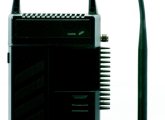Most schools have one: a ‘cupboard of shame’, in which languish all kinds of products and resources that were taken for a trial spin, put away, and somehow never found their way back out again. I wonder how much assistive technology meets that fate? It’s an important question; galvanising ourselves to meet the needs of our students through edtech is a moral imperative – and we need to keep up with the world those young people inhabit.
The good news is, if you can operate a keyboard, you have edtech competency. Support is at your fingertips from phone lines to webinars to YouTube tutorials; the journey simply starts with a little confidence and a strong intention. The technological holy trinity of saving time, saving money and securely facilitating progress is closer than ever – providing the powers that be have blessed us with a budget and adequate time for training and evaluating, that is.
Clear benefits
Historically, assistive tech has been seen almost exclusively as a tool to support learners with SEND. For example, many teachers will have witnessed the value of a scanning pen deployed to support a dyslexic student with literacy; and seen how this facilitates full access to the curriculum, bringing immediate validation. Why, then, shouldn’t any struggling reader, regardless of a lack of diagnosis, have the same opportunity to boost self-esteem, experience learning independence, and make accelerated progress? This kind of technological support has been a part of the educational landscape for those with physical impairments and learning difficulties for a long time, and rightly so; perhaps now we need to shift our thinking towards the potential gains that could make possible for every learner.
Shift is happening; and the technological revolution effectively puts assistive technology into everyone’s hands, in the form of those sleek, discreet and ergonomically pleasing mobile phones we all love so much. These are the same qualities any self-conscious learner appreciates in personal devices – so how do we embed equivalent edtech in our schools and in our pedagogy? Who is going to take responsibility for assessing students and ensuring they get the right tools? The IT technician? SLT? The SENCo? Whoever it is, there is a crucial role for someone with the passion, patience, and a good understanding of learning needs, to drive assistive technology development, right across the curriculum. If we are going to fully embrace these sleek and useful learning tools, we need a plan that is comprehensive and goes far beyond deployment and maintenance. A good place to start looking for edtech solutions to raise literacy in your classroom is the LendEd website (from BESA, supported by the DfE), which is a good place for case studies and reliable peer reviews.
Get inspired
Let’s consider the impact of getting this right. There are plenty of inspirational assistive tech users with SEND who are already letting us know that without a raft of little technological adjustments in their lives they would not be as productive, or even just feel safe. There is also a growing number of young people, let’s call them the ‘confident digital natives’ who are fact finding, corroborating evidence, developing new vocabulary and synthesising explicit and implicit ideas with just the use of their thumbs.
So, if you have tech in the cupboard that will raise levels of literacy, get it out, dust it off and get it where it belongs: in the hands of every student. Watch their skills and self-belief soar. And as an added bonus, you’ll free up some cupboard space for whatever you’re having to confiscate in the wake of bottle flipping and fidget spinners…
About the author
Julia Clouter advises on assistive technology for Scanning Pens and is a consultant SENCo.










